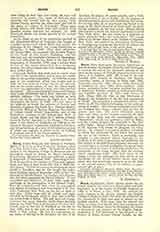

Bacon, DAVID WILLIAM, first Bishop of Portland, Maine, U.S.A., b. in New York City. September 15, 1813; d. in New York, November 5, 1874. He made his classical studies at the Sulpician College at Montreal and his theological course at Mount St. Mary’s Seminary, Emmitsburg, Maryland, and was ordained a priest in Baltimore, December 13, 1838. Returning to New York he served on the mission at Utica and Ogdensburg, and then in New York City and at Belleville, New Jersey. In 1841 he was sent to establish the third parish in Brooklyn, and for this bought the unfinished building begun in November, 1831, as the “Independent Catholic Church” by the Rev. John Farnan, who had been suspended by Bishop Dubois. It was completed and dedicated, June 10, 1842, under the patronage of the Assumption of the Blessed Virgin. Here he remained until 1855, when he was named first Bishop of Portland, and consecrated in St. Patrick’s Cathedral, New York, on the 22d of April of that year. There were only six priests and eight churches in his diocese, which at that time included the entire State of Maine. His zeal, tact, and energy overcame the many obstacles which Know-Nothing bigotry, the Civil War, and the great fire that destroyed most of the city of Portland on the 4th of July, 1866, put in the way of the progress of the Faith in that section. He had the consolation, at his death, of leaving to his successor the care of 63 churches, 52 priests, 23 parish schools, and a Catholic population of about 80,000. In the summer of 1874 he started for Rome with Archbishop McCloskey, but having fallen ill on ship-board was forced to remain in the Naval Hospital at Brest until the Archbishop returned, on his way home. Bishop Bacon was carried on board the steamer and barely reached New York alive. He was taken to a hospital on shore, where he died a few hours later. The bronze altar of the Sacred Heart, in St. Patrick’s Cathedral, New York, was erected by Archbishop McCloskey in thanksgiving because the life of his old friend was spared until he got back to his native land.
THOMAS F. MEEHAN

